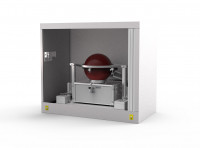This product is no longer manufactured. Remaining stock may still be available. Please refer to the alternatives listed below under "Similar products" or contact us directly.
Alternative Products for this discontinued product:
ISD-15-BTS2048-VL
Compact integrating sphere spectroradiometer system for LED test and system integration
- Integrating sphere with 15 cm Diameter, auxiliary lamp, measurement port with dust protection (glas dome), 2π-geometry
- Pulse and CW meausrement
- Fast shutter (electronic shutter) for very short integration times (2 µs)
- High-end spectroradiometer with BiTec sensor* for fast and accurate measurement of the luminous flux, spectral radiant power, CCT, CRI, etc.
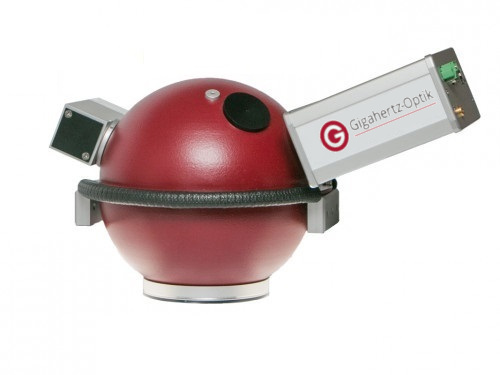
The First Class BTS2048 Spectroradiometer Series
The high-quality BTS2048 Series CCD based spectroradiometers are internationally recognized as a high-end products. It is one of the most compact spectroradiometers on the market which enables direct system integration in many applications without the need for expensive, and potentially measurement degrading, light guides. Among its characteristic features is its diffuser window which permits direct mounting onto integrating spheres (e.g. the ISD-15) for measurement of luminous flux. More detailed information about the BTS2048-VL can be found in the respective data sheets. The unit is also available in the BTS2048-VL-TEC thermoelectric cooled version.
Use of the BTS2048 Series for front-end and back-end LED binning
The BTS2048 is ideally suited for use in industrial LED binning. In particular, it can be used to perform time-synchronized, pulsed measurements of LEDs as stipulated by CIE S025 or DIN 5032-9. This is necessary when one wants to account for thermal effects in measurements (see also technical article on SSL/LED testing). The instantaneous, electronic zero setting of all pixels (electronic shutter) of the CCD sensor in conjunction with its trigger interface, results in perfect synchronization between the BTS2048 measurement and the LED current supply. The device also has an exceptionally wide dynamic range with a minimum integration time of just 2 µs. This, is 1000 times shorter than conventional devices (typically milliseconds), hereby makes it possible to achieve an OD3 factor. Additionally, the internal OD1 and OD2 filters increase the dynamic range up to 9 orders of magnitude and the fast Ethernet interface provides rapid data transfer. For users to integrate the device into their system, the BTS2048 Series is supplied with the powerful S-SDK-BTS2048 software development kit.
*One of its unique features is the from Gigahertz-Optik developed innovative BiTec sensor that consists of a V(lambda) filtered Si photodiode and a spectroradiometer unit. This makes it extremely linear, stable, and fastand is therefore a guarantee for higher measurement accuracy which is not accompanied by any disadvantages. Both sensors can be used independently and the mutual correction of the sensors is advantageous for accuracy, speed and versatility (see article on BTS technology).
Enhancement of the BTS2048 to a 2Pi luminous intensity spectroradiometer
The BTS2048 can be combined directly with integrating spheres in order to measure luminous intensity. With its compact design, light weight, and no need of a connecting light guide, the integrating sphere and spectroradiometer form a monolithic module that can be conveniently integrated in complete test systems for front-end and back-end LED binning. It is supplied as a fully calibrated module. The module can be recalibrated as a single entity. Eliminating the need for connecting light guides enables convenient recalibration with low uncertainty The BN-LHSF-2P-20 2pi calibration lamp can be used to perform the recalibration directly in the test system using the supplied user software.
The Integrating Sphere Construction Kit from Gigahertz Optik GmbH allow for customization and hence the best possible adaptation of the integrating sphere to the specific application.
The ISD-15-V01 integrating sphere for industrial LED binning
The ISD-15-V01 has many properties that make it perfect for luminous flux measurements in combination with the BTS2048 spectroradiometer. It has a 150 mm (6 inch) diameter and offers a good compromise in terms of 2Pi acceptance and light throughput for high sensitivity. The 35 mm diameter measurement port has a knife edge for unrestricted light entry. A transparent dome behind the measurement port is integrated to protect the coating of the sphere from contamination in industrial environments. The sphere features an auxiliary lamp to compensate for the self-absorption effects. Illumination with the auxiliary lamp is done through a diffuser window.
Calibration
One essential quality feature of photometric devices is their precise and traceable calibration. The ISD-15-V01 -BTS2048-VL 2pi luminous flux spectroradiometer is calibrated at Gigahertz-Optik’s DAkkS accredited (D-K-15047-01-00) ISO/IEC 17025 calibration laboratory for the spectral responsivity and spectral irradiance. The calibration is performed with a BN-LHSF-2P-20 calibration lamp that has 2pi radiation characteristics in the integrating sphere. Every device comes with its respective calibration certificate.
Software for system integration
Gigahertz-Optik offers the S-SDK-BTS2048 software development kit for integration of the ISD-15-BTS2048-VL 2pi luminous flux spectroradiometer with the system software of the user’s LED test systems.
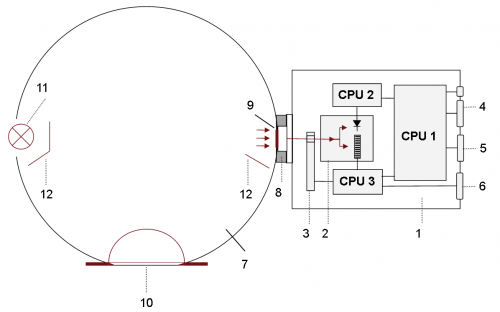
1) BTS2048-VL 2) BiTec sensor with Si photodiode, CCD spectroradiometer 3) Filter wheel with OD1, OD2 and shutter 4) USB 2.0 Interface 5) High speed ethernet Interface 6) Trigger In/Out 7) Diffuser in sphere surface level 8) Measurement port with protection dome window and knife-edge design 11) Auxiliary lamp 12) Baffle
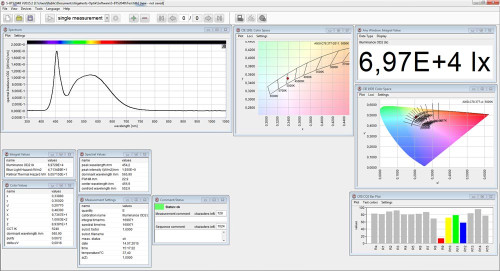
S-BTS2048 application software
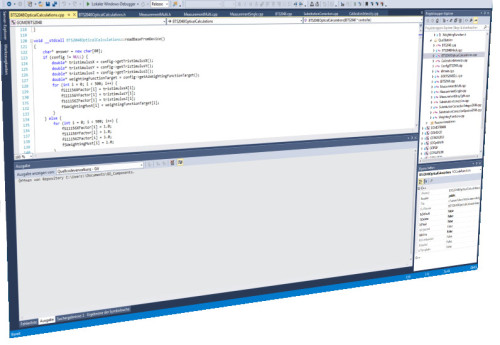
S-SDK-BTS2048 Software Development Kit
Similar Products
Product Categories
